Kawasaki GPz1100
The angular instrument console included a fuel gauge, but most GPz riders were more interested in the big
Bright red paintwork plus black finished engine and pipes gave the big GPz a suitably striking appearance.
With its bright red paintwork, fancy new | initials and high-tech fuel-injection system, the original GPzl 100 was the biggest and fastest of a new three-bike range of high-performance fours that brought Kawasaki storming into the 1980s. But once glance confirmed that the big GPz was very much a superbike of the old school, with an air-cooled, two-valves-per-cylinder engine, twin-shock chassis and generous supplies of both power and weight. Even at a standstill, the GPz was an imposing motorcycle. Its angular styling made no attempt to hide the fact that this bike was not built to be messed with. Its seat was high, its wheelbase was a long, and it weighed a substantial 562lb (255kg) with fuel. The engine's capacity of I089cc was slightly smaller than that of Yamaha's rival XSl 100. let alone Kawasaki's own Z1300 six. But with a peak output of l()8bhp at 8500rpm. the GPz was the world’s most powerful four in 1981.
Kawasaki needed that credibility boost, because the Big K's reputation for all-conquering performance had slipped since the mid-1970sheyday of the Zl and Z900. Unlike its rival the 16- valve Suzuki GSX1100, the GPz relied on Kawasaki’s age-old format of two valves per cylinder. But the new motor was substantially uprated from that of the Z1000H EFI, which had become the world's first fuel-injected roadster 12 months earlier.
Capacity was increased by boring out the cylinders to give dimensions of 72.5 x 66mm, and the larger pistons had higher domed crowns to increase compression ratio. The new motor had bigger valves and revised timing for its twin cams, the crankshaft was lightened, the five-speed gearbox strengthened and an oil-cooler added between the frame’s twin downtubes.
Uprated chassis
The GPz’s chassis was also based on that of the 1000H, with numerous modifications. Its main frame tubes were made from larger-diameter but thinner-walled steel. Rake and trail dimensions were increased. Front forks were 38mm in diameter and air-assisted. Rear shocks could be tuned for rebound damping as well as the normal preload. All this was state-of-the-art for a Japanese superbike.\
 |
| Add caption |
So too was the bike's large instrument console, with its voltmeter and fuel gauge set between the speedometer and rev-counter.
Those dials got to record plenty of action. With its big valves and hot cams the GPz liked to be revved, tugging hard on its rider’s arms as it howled through the gears towards the 8500rpm redline and a top speed of around 140mph (225km/h). Acceleration away from the line was ferocious, making the GPz motorcycling's straight- line king in 1981. And its mid-range delivery was excellent, too. The fuel-injection gave a crisp response, sending the bike surging forward even from below 3000rpm in top gear.
Stability at speed was good provided the GPz was pointed in a straight line and the throttle was held open. Competent suspension meant that the big bike could be good fun in corners, too. But braking and changing direction at the same time was more than the chassis could take without complaint. The GPz was slightly lighter than its Z1000H predecessor but there was still a lot of metal to throw around.
Kawasaki moved quickly to update the GPz, adding a handlebar fairing in 1982. and a year later revising it further with a larger, solid-mounted fairing plus single-shock rear suspension. In 1984 came a bigger step: the liquid-cooled, 16-valve GPZ900R. That was the bike with which Kawasaki entered the modern era. but its debt to its predecessor of 1981 should not be overlooked. For it was the first big red GPz 1100 four that restored Kawasaki’s justifiably proud reputation for full- blooded high performance.
This 1981 model GPz was the last of Kawasaki’s flagships to rely on the traditional naked layout. Just a year later the hike was given a handlebar fairing that made its mighty four-cylinder engine's performance more usable; and in 1983 the final aircooled GPz. had a more substantial fairing.
Handling was fine at a reasonably rapid pace. But when pushed harder the GPz.llOO was one of many big Japanese fours whose chassis sometimes struggled to control the bike’s power and weight. resulting in high-speed instability.
Specification Kawasaki GPz1100 (1981)
- Engine Air-cooled dohc eight-valve four
- Capacity 1089cc (72.5 x 66mm)
- Maximum power 108bhp @ 8500rpm
- Transmission Five-speed, chain final drive
- Frame Steel twin downtube
- Suspension Telescopic front; twin shocks rear
- Brakes Twin discs front; disc rear
- Weight 562lb (255kg) wet
- Top speed 140mph (225km/h)



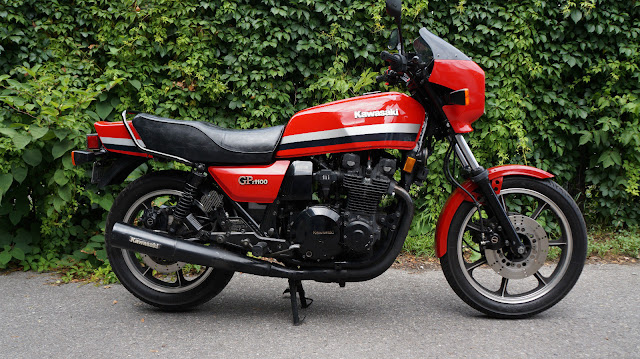

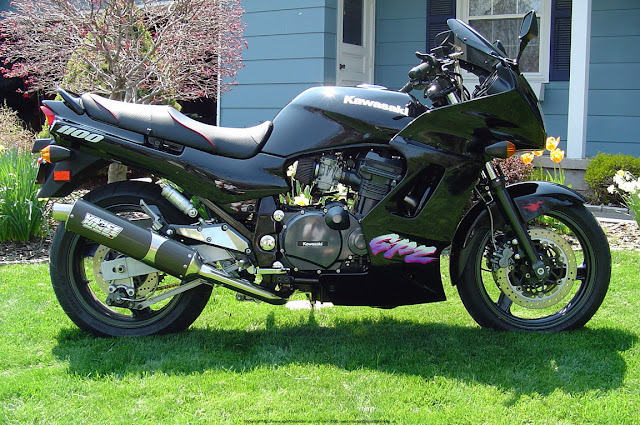

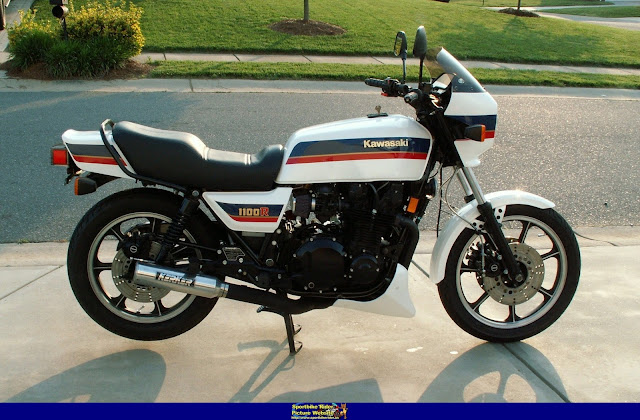
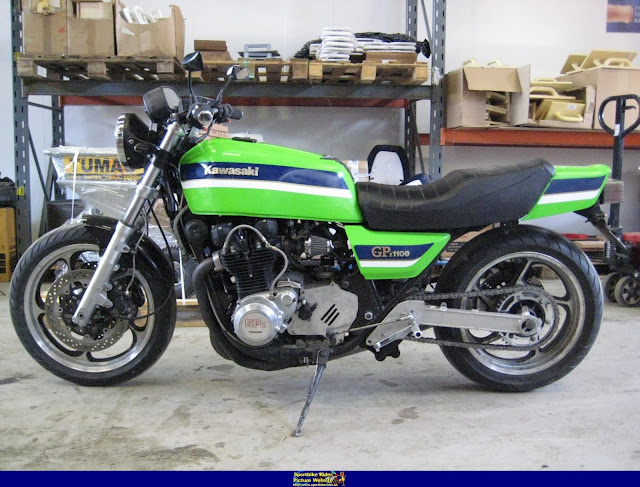
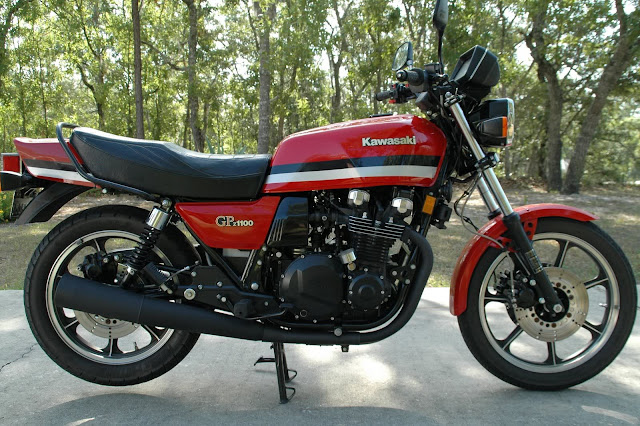











0 comments: